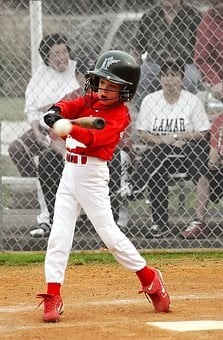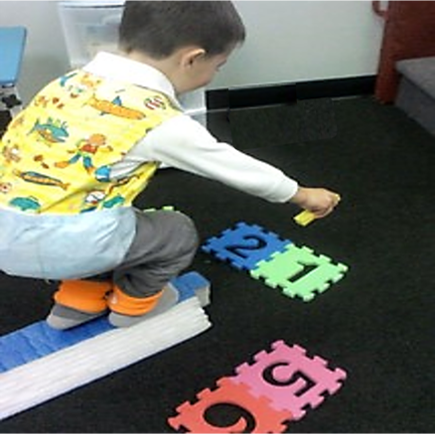
The first phase of coordination may be described as motor planning. The first steps of motor planning include:
- Planning what steps to take
- Planning what sequence or order in which to organize the steps
- Using vision or visualization to guide the motor steps taken
Coordination requires preparing the body for the first steps, or motor planning the activity. Motor planning also requires following through with secondary steps needed to complete the motor activity. For example, the photo above shows a youngster at mid-swing with a bat and ball. This activity requires the youngster to first position the body at the plate. Awareness of the need for separation of both feet with toes pointed at the plate is required. Positioning the trunk to face the plate while the neck rotates the head to face the pitcher is also needed. Meanwhile, the arms need to hold the bat while the eyes watch the oncoming ball.
First Steps
Coordinating the building blocks for these first steps of motor planning might look like this for the batter:

- Body Awareness – ability to assess the current position of body parts needed for the activity
- Motor Sequencing– ability to time the force, direction, and distance of moves needed on a moment-to-moment basis throughout the activity
- Visual motor integration – visual guidance — ability to integrate vision with body moves needed for the activity
Some of the secondary steps the batter needed for follow-up included:
- Attention
- Postural control
- Semi-automatic analysis of feedback
- Mid-course corrections
The combined steps of coordination with motor planning
Coordination and motor planning with follow-up when they are brought together look like this:


The steps of motor planning for coordination may be more easily seen in the activity shown by the boy in this next photo. Initially, the boy plans to hold the core of his body steady for success as he walks along the balance beam toward the target. He plans the sequence of his steps while using vision to guide his motor moves. Meanwhile, he carefully plans to control his posture by bending slowly with mid-course corrections to prevent slipping off the balance beam. He pays attention to feedback from muscles of postural control while his arms and hands reach forward to put the parts of the foam pieces together on the floor.
When children have difficulty with coordination, it is often an indication that these ingredients are compromised . Activities at home that address deficits in motor planning skills include undertakings that incorporate whole body actions. Playground activities, sports and household chores that incorporate heavy work are likely to be helpful in addressing deficits in motor planning skills.
For more information and resources click on links below:

Comments are closed.